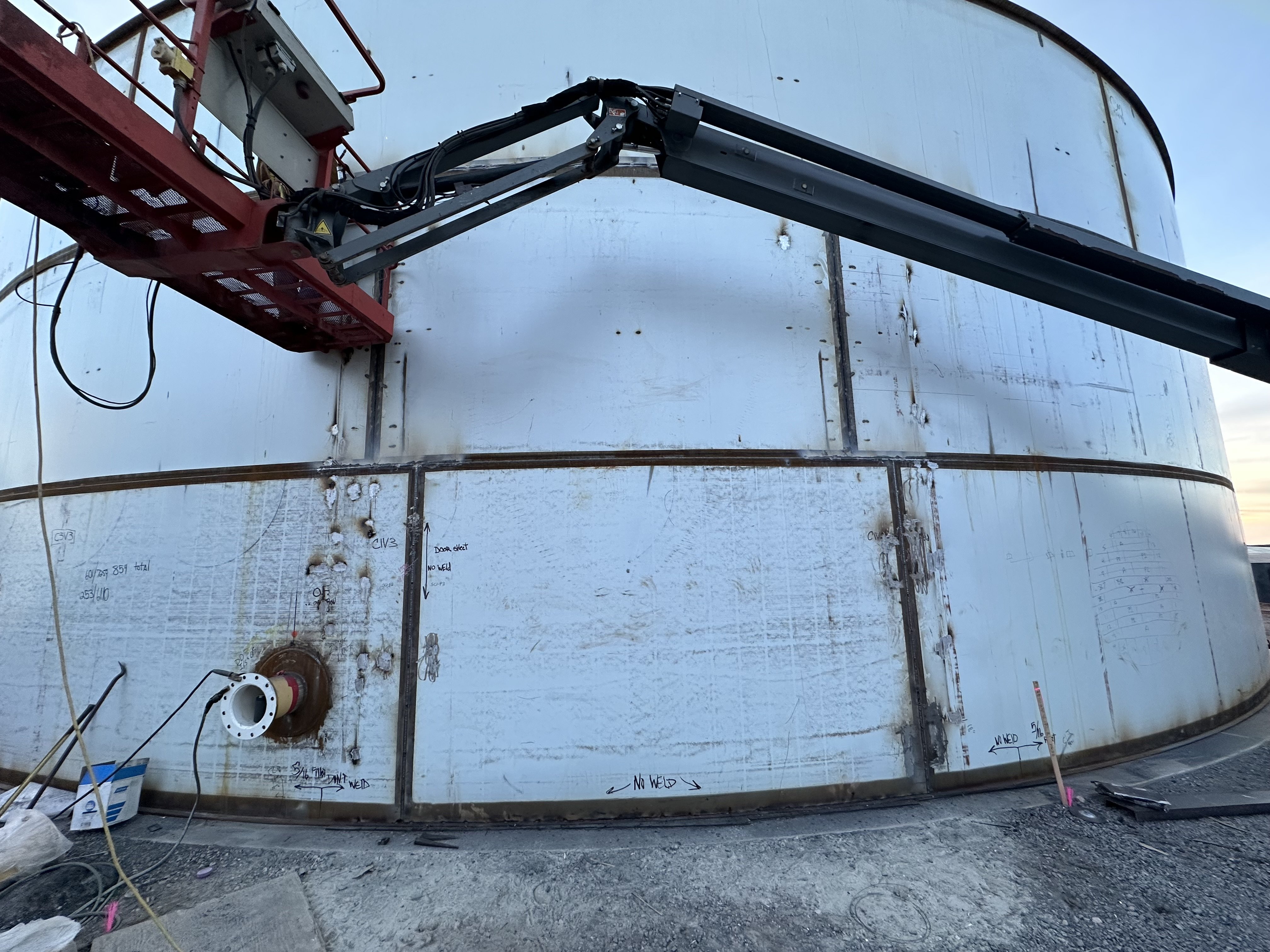The Vital Function of Storage Tank Welding Evaluation in Ensuring Structural Integrity and Safety Conformity in Industrial Applications
In the world of commercial applications, storage tank welding evaluation emerges as a pivotal element in safeguarding architectural stability and making sure compliance with security regulations. Utilizing a mix of methods such as visual assessments and progressed screening techniques, these inspections offer to recognize and reduce potential imperfections prior to they escalate into significant threats. The ramifications of these practices expand past mere governing adherence; they essentially impact functional effectiveness and asset long life. Nevertheless, the intricacies bordering the inspection procedure trigger a closer assessment of its techniques and results, disclosing layers of relevance that advantage more exploration.
Relevance of Tank Welding Assessment

Ensuring conformity with market standards and policies is one more considerable element of container welding examination. Governing bodies mandate stringent standards for the building and upkeep of storage space containers, and thorough inspections help organizations abide by these needs. Non-compliance can lead to extreme fines, consisting of penalties and closures, additionally highlighting the requirement for extensive assessment procedures.
Additionally, tank welding inspection plays a critical function in maintaining functional effectiveness. In recap, the value of container welding evaluation lies in its capacity to secure public wellness, protect the atmosphere, and ensure conformity with regulatory structures.
Key Inspection Methods
Effective container welding inspection depends on a variety of key strategies that ensure thorough evaluation of weld high quality and structural stability. Amongst the most common methods are visual evaluation, ultrasonic testing, radiographic screening, and magnetic fragment screening - Tank Welding Inspection. Each approach uses special benefits in analyzing various elements of the weld
Visual assessment works as the initial line of defense, permitting assessors to determine surface area issues, irregularities, or disparities in the weld grain. Ultrasonic screening uses high-frequency acoustic waves to detect internal problems, such as fractures or spaces, supplying a detailed assessment of weld integrity. This method is particularly effective in discovering problems that might not show up externally.
Radiographic screening uses X-rays or gamma rays to generate photos of the welds, disclosing inner suspensions and offering a long-term record for future recommendation. This technique is highly effective for crucial applications where the risk of failure must be minimized.
Lastly, magnetic fragment screening is employed to identify surface area and near-surface issues in ferromagnetic products. By using magnetic fields and fine iron particles, inspectors can determine interruptions that may endanger the structural integrity of the tank. With each other, these strategies develop a robust structure for making certain high-grade welds in commercial applications.
Compliance With Safety Requirements

Normal assessments play an essential role in ensuring conformity by determining prospective failings or variances from recommended criteria. Examiners are educated to review weld top quality, validate material requirements, and evaluate the total structural honesty of storage tanks. Their expertise is important in guaranteeing that welding processes meet the needed safety criteria.
Furthermore, conformity with security standards not only protects workers yet likewise safeguards the atmosphere from potential threats such as leaks or catastrophic failings. Organizations that focus on safety compliance are much better positioned to minimize dangers, enhance operational efficiency, and cultivate a culture of safety within their labor force. In recap, maintaining strenuous conformity with security criteria is crucial for the effective operation of tank welding tasks in commercial settings.
Benefits of Regular Inspections
Normal assessments are important to keeping the structural integrity and safety of welded storage tanks. These assessments give an organized approach to identifying potential problems or weaknesses in the welds, making sure that any type of problems are resolved prior to they rise right into substantial failings. By performing routine assessments, organizations can spot rust, tiredness, and other forms of damage that might endanger container efficiency.
Additionally, constant evaluations add to compliance with industry regulations and requirements. pop over to these guys Complying with these guidelines not just minimizes lawful dangers but also enhances the company's online reputation for security and dependability. Regular inspections cultivate an aggressive security culture, encouraging workers to recognize and focus on the relevance of devices integrity.

Study and Real-World Applications
Study and real-world applications highlight the concrete impact of efficient tank welding inspection methods. One significant instance is a large petrochemical center that faced substantial operational disturbances due to leakages in storage containers. Complying with the application of extensive welding evaluation find procedures, consisting of visual and ultrasonic screening, the center determined crucial imperfections in weld joints that might have resulted in devastating failings. This positive strategy not only stopped environmental dangers however additionally saved the company millions in possible clean-up prices and regulatory penalties.
Likewise, a water treatment plant carried out a thorough inspection program for its tank welding operations - Tank Welding Inspection. By including non-destructive screening techniques, the plant had the ability to discover early indicators of corrosion and fatigue in weld joints. This prompt intervention expanded the life-span of the tanks and guaranteed conformity with security regulations, therefore securing public wellness
These instance researches emphasize the importance of normal and organized container welding evaluations. By prioritizing these practices, industries can mitigate risks, enhance structural integrity, and ensure conformity with safety and security criteria, inevitably bring about boosted functional effectiveness and minimized obligations.

Final Thought
To conclude, container welding assessment is a vital element of preserving structural honesty and security in industrial applications. Employing my link different assessment strategies makes sure early detection of possible flaws, therefore stopping devastating failures. Adherence to safety and security requirements further boosts operational reliability and conformity with regulative needs. Eventually, regular examinations not just shield public health and the setting however additionally add to the longevity and effectiveness of essential possessions, underscoring the crucial function of this method in commercial operations.